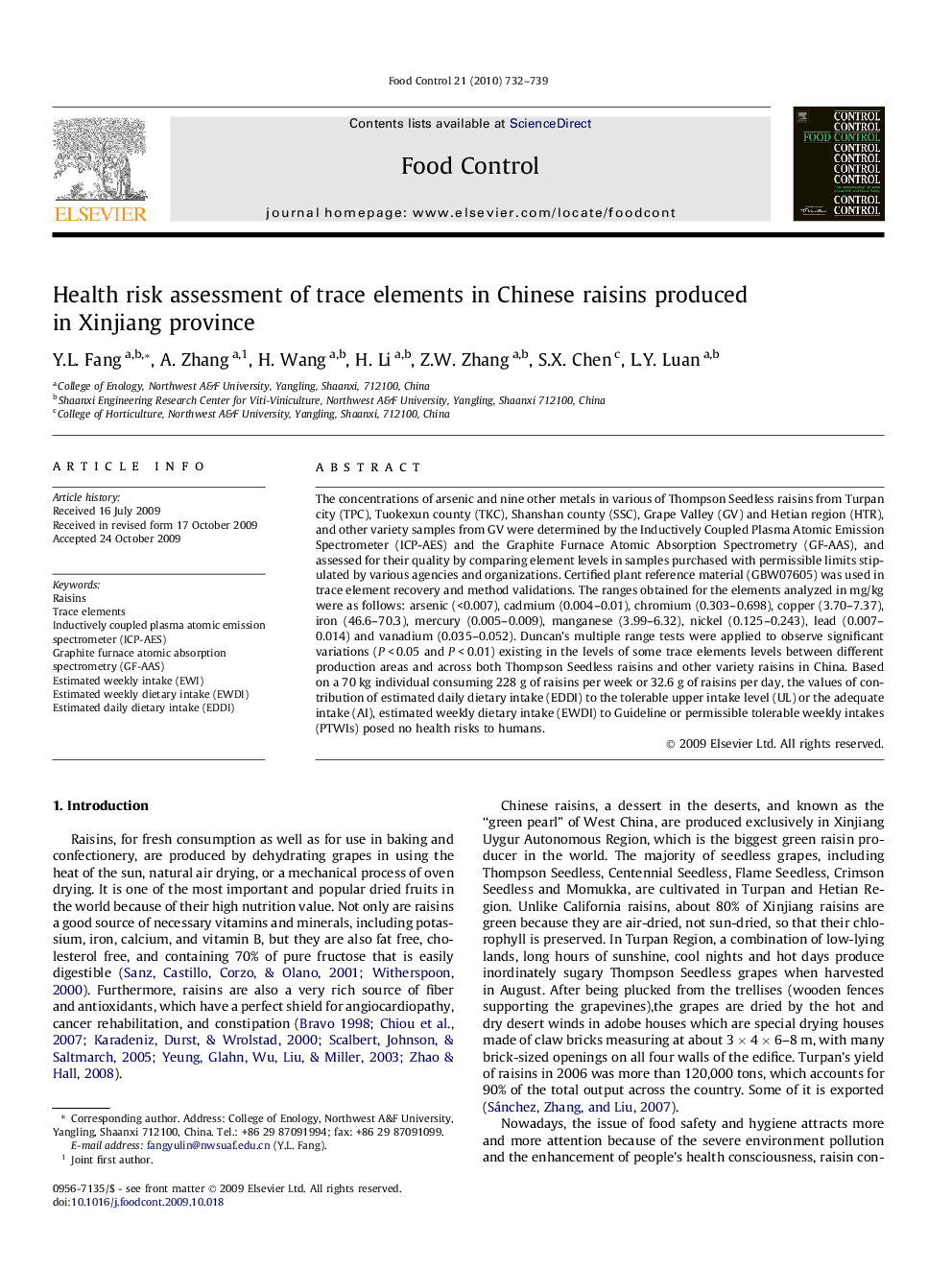| Article ID | Journal | Published Year | Pages | File Type |
|---|---|---|---|---|
| 4559838 | Food Control | 2010 | 8 Pages |
The concentrations of arsenic and nine other metals in various of Thompson Seedless raisins from Turpan city (TPC), Tuokexun county (TKC), Shanshan county (SSC), Grape Valley (GV) and Hetian region (HTR), and other variety samples from GV were determined by the Inductively Coupled Plasma Atomic Emission Spectrometer (ICP-AES) and the Graphite Furnace Atomic Absorption Spectrometry (GF-AAS), and assessed for their quality by comparing element levels in samples purchased with permissible limits stipulated by various agencies and organizations. Certified plant reference material (GBW07605) was used in trace element recovery and method validations. The ranges obtained for the elements analyzed in mg/kg were as follows: arsenic (<0.007), cadmium (0.004–0.01), chromium (0.303–0.698), copper (3.70–7.37), iron (46.6–70.3), mercury (0.005–0.009), manganese (3.99–6.32), nickel (0.125–0.243), lead (0.007–0.014) and vanadium (0.035–0.052). Duncan’s multiple range tests were applied to observe significant variations (P < 0.05 and P < 0.01) existing in the levels of some trace elements levels between different production areas and across both Thompson Seedless raisins and other variety raisins in China. Based on a 70 kg individual consuming 228 g of raisins per week or 32.6 g of raisins per day, the values of contribution of estimated daily dietary intake (EDDI) to the tolerable upper intake level (UL) or the adequate intake (AI), estimated weekly dietary intake (EWDI) to Guideline or permissible tolerable weekly intakes (PTWIs) posed no health risks to humans.
